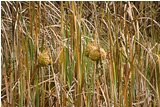PHOWN summaries and recordsVirtual Museum View records in Virtual Museum formatCoverage map for all species Species totals, Nest stats per species and Observer totals Species summary , or General query Observer records, or View VM record Photo of the week, or PHOWN repeats, or PHOWN priorities |
PHOWN record summary
|
Enter new vm record to see a different record and hit 'Go'.
|
Species allocated by Coordinator: Record details entered by participant: (see all records here for this participant) Google map for this record (zoom in and switch to satellite view)
Interactive map: N4 ctf -
Photos uploaded by observer



Large photos
793, Red-headed Weaver Anaplectes rubriceps (see species summary here)Record status ACCEPTED Vm 5276 [on-line data upload (2013-03-15): 34069] Species Red-headed Weaver Observer(s) Zaloumis, Alex Country, town, locus South Africa, Limpopo, Letaba ,
2230DBLocality Makuya/Mutali; Makuya gate, North East Limpopo Latitude, longitude -22.5035555556, 30.9702777778 [0 m accuracy] Date 2013/3/5 Notes revisited - mv4128 (mv1052/4124). average mid-morning (10h30) count with 2 people - 206 completed nests - no weaver birds in attendance (palm swifts seen & both klaas & diedericks heard
in immediate vicinity). Note - last pic - nest counted as 3 completed units. Numerous nests on ground not counted- being consumed by termites; only RHW nests in this baobab included in count. Nest count 206 Nest site tree
To see this map with all other PHOWN records, click here. Note that the map on this page will load very slowly and probably will only work if you use Chrome as a browser.
History of repeat colony counts
Note: repeats from the same day are not shown.vm Species code Date Nests Notes 1052 793 13/8/2011 0 baobab next to Mutale Falls entrance with many old nests - no birds visible. many other trees in vicinity also festooned with nests 4124 793 20/11/2012 211 Nest count: 211 plus 14 on ground & 7 in neighbouring baobab + 3 in
other trees. (Plus one village weaver nest & broadbilled roller)
note. 1. 14 fallen nests cut open - all lined with mopani leaves.
2. 9x blue egg & 1x white egg shell remains found below.
3. one fallen nest had obviously been used by another species (white egg)
4. many nests are reused or added on to/extended/multi level. (can see
old structure when cut open)
5. Klaas, Diederick & Jacobin cuckoos calling. no predators seen over
2 visit periods, but found dwarf mongoose colony in nearby village.
6. nest robbing for material common - as was picking up from fallen nests.
7. 2x other large baobabs with big nest populations nearby - but cannot access.
8. only water in immediate region was constantly dripping taps in
adjacent village. Permanent water- mine dam about 1km away.
9. single or double RHweaver nests found in large trees in village as well.
10. spent about 5hrs over 2 days watching colony & recording behaviour.
11. weather was exceedingly hot. Veld was very dry.
4128 793 21/11/2012 0 see notes at prev day 5276 793 5/3/2013 206 revisited - mv4128 (mv1052/4124). average mid-morning (10h30) count with 2 people - 206 completed nests - no weaver birds in attendance (palm swifts seen & both klaas & diedericks heard
in immediate vicinity). Note - last pic - nest counted as 3 completed units. Numerous nests on ground not counted- being consumed by termites; only RHW nests in this baobab included in count. 7303 793 17/10/2013 0 camped under tree to study late afternoon, night & morning
activity. Still no rain. birds drinking from tap. Feeding from scraps
- esp. pap from labour compound. Pied crow making repeated inspections. Green Hoepoes checking & feeding from nests. Black cuckoo calling.
Most nests being re-furbished with old sticks and green leaves. not much building, just fiddling. Most behaviour was males displacing each other in bursts, some chasing females, some paired birds chasing unattached females which were inspecting nests. Groups fly off to feed in compound - starting
at dawn before humans started moving around.
Cut throat finches continually harrassed until dark.
No of males - 30 odd. Females 15-20.
Nests - about 150 old, newer, torn, etc. many on ground.
Roller busy lining nest in hole above colony no other weaver species seen.
other much smaller RHW sites in area had males, no females. Some new or half nests seen.
Staff claim weavers arrived 2 weeks ago but main colony not arrived.
Conclusion: Colony 'on hold' - rains will probably re-activate nest building & breeding behaviour.
cut throats arrive at dusk every evening to roost in nests.
The RHW chase them around until sunset then calm down. The cut throats
then tend to pick the same 'unoccupied' nest to roost.
Have pic of one of about 4 pairs (of about 11 birds) cut throats trying
to mind their business until RHW retire.
The same nest tends to be used and are often identifiable by their
lining, lice, excretement build-up - and that the green wood-hoopoes
tend to concentrate on - I presume to eat the vermin
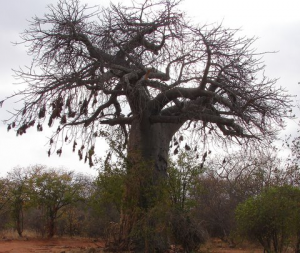
Vm 1052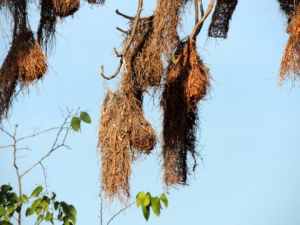
Vm 4124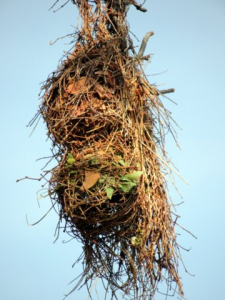
Vm 4128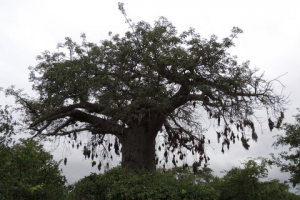
Vm 5276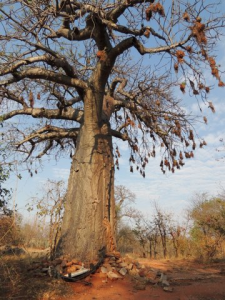
Vm 7303








